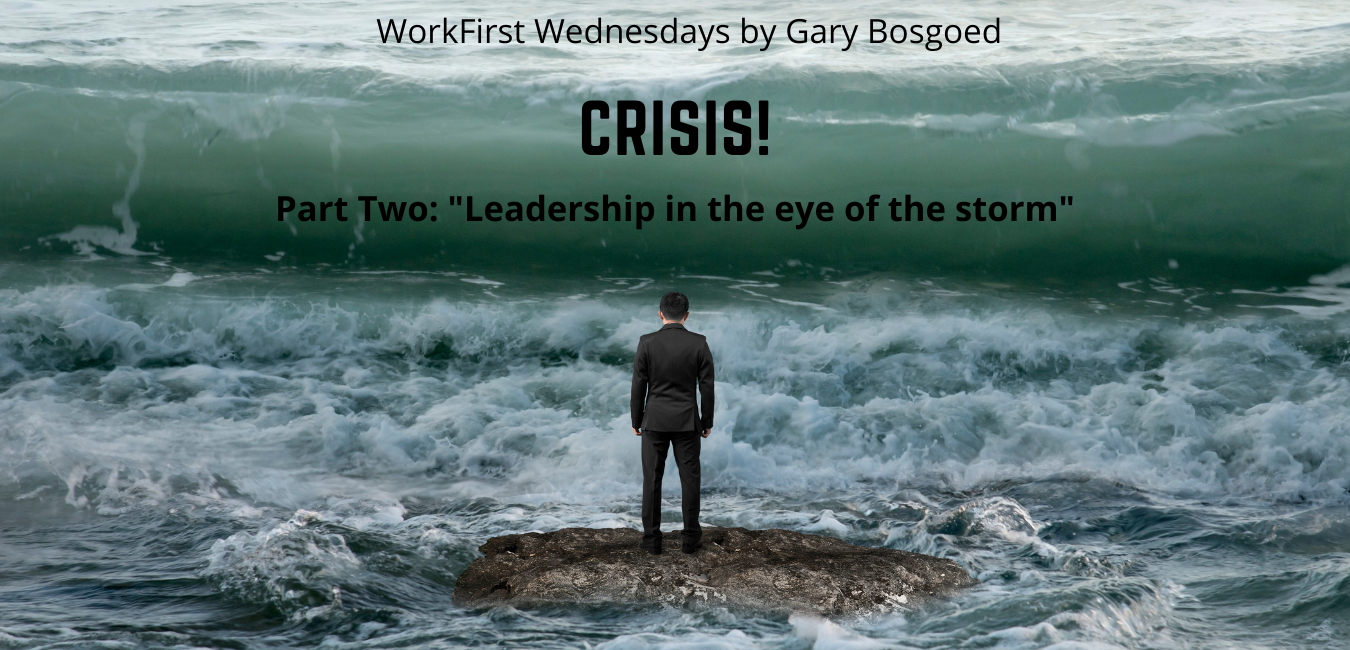“No duff! No duff! This is not a drill.”
These are not words that you want to hear. They indicate you are in a crisis. In Britain, Ireland, Canada, Australia, New Zealand and Singapore, this phrase is military slang and radio voice procedure used when the subsequent announcement is related to a real crisis and not a training exercise.
The message also means it is time to implement predetermined procedures, and the assumption is you have them. In business, however, crisis can mean a lot of things. We never shout “No duff” during these times, but we convene leadership practices immediately so navigation of the crisis can begin.
In my career as a business leader and project manager, our projects have been impacted by; the pandemic, forest fires, plant fires, grass fires, protests/blockades, power outages, air conditioning failures, cancelled projects, and many other events of differing impact and duration.
According to the Centre for Creative Leadership, the five actions are recommended to prepare and respond when leading through a crisis. I have commented on each as they relate to my experience as a leader in a crisis.
- Seek credible information
As a group of leaders, our priority is to acquire the most up-to-date information about the crisis. For a crisis which occurs on a project, this could come from our clients, our own people on site, or local people and activists in the media.
In my experience, it was surprising how much misinformation could arrive so quickly. In the early stages of a crisis, information arrives with speed but not accuracy. We could receive conflicting information from about the details of the crisis itself, the location of our people, and emergency responses. At times, it’s almost like we offered a reward for ‘any information leading to…” It can be challenging to sort through what we believe to be true. Of course, we generally believe the official channels of client and on-site personnel, but when it comes to locating dozens or hundreds of your personnel, the situation becomes complicated very quickly. Case in point; we have worked in operating plants where cell phone use is prohibited. These same sites, however, are incredibly well managed in terms of crisis preparation, including access to correct information.
- Use appropriate communication channels
After we gather information, we share it within the organization through all the internal communications tools at our disposal. Transparency in communications is critical. There are families involved who will rely on the information provided by the company to provide them while they are being bombarded by partial or outright misinformation. Using predetermined communication channels can reduce emotional distress, diminished fear, support tactics, and demonstrate leadership.
Of course, it is recommended that this communication occur face to face. At times, circumstances might not allow for that approach, so backup systems are critical. As well, that system must be usable by employees, family and friends, even suppliers. Projects are not meant to be stopped, so there is a lot of momentum that needs to be managed to avoid a secondary or tertiary crisis.
- Explain what your organization is doing about the crisis
As a leader, the first thing you feel during a crisis is the need to act quickly and decisively. Time is compressed. When you are feeling that pressure, you do not always have a complete picture of the crisis because of the stress, little information, and concerns for your people. The mantle of leadership requires that you take initiative, and do not over-analyze. Communicating decisions and actions as they unfold will be seen as behaving with integrity, truth, and honesty.
It is also important to keep in mind everyone views the crisis from their own perspective. Department heads and colleagues will be anxious for the fate of their colleagues, as well family and friends. Human Resources are keepers of private information and will likely act as consistent and professional facilitators of communication with families. Finance will look at the fallout from the crisis as a loss of revenue and mounting costs.
- Be present, visible, and available
As a leader of a large project delivery organization, my facial expressions are continually noticed by the employees. This is even more critical in a crisis. As a leader, you need to be accessible to employees. Lines of communication must be established directly to your desk because employees need to hear from their leaders frequently. Being seen as calm, concerned, knowledgeable, and in charge gives confidence to employees that things are under control and will turn out fine.
- Dedicate organizational resources
Never waste a good crisis. Learn from it. In time, the facts will be gathered, the system and procedures will kick in, safety and emergency personnel will do their job, and it will be time to think about recovery. That important future phase will be explored next week in part three.
“No duff.” I don’t know the origins of the phrase, but I saw it used when an accident occurred on a reality show about gold mining. A simple phrase that has no other application, and says so much. It changes the focus of the team, signaling to brace themselves for what is coming. That preparation is vital in a crisis; change your focus and begin to follow your processes.
Have you ever had a “No Duff” situation? We’d love to hear what was most helpful for you in getting through the situation.
Stay safe, everyone!
~ Gary and the team at Bosgoed Projects




